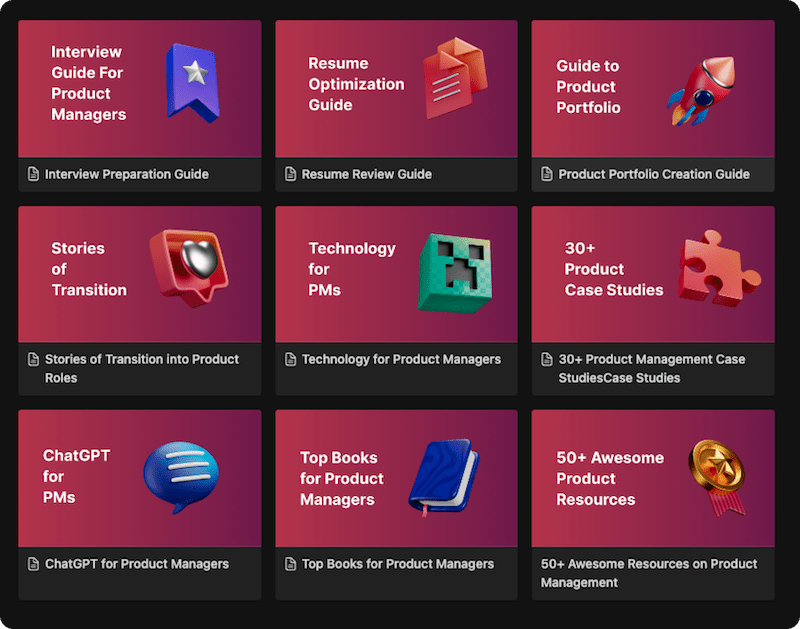You’re in a high-stakes product manager interview. You’ve navigated questions about your experience, your leadership style, and your favourite products. Then, the hiring manager leans forward and asks, “How many UPI transactions happen in India every day?” A moment of panic sets in. You don’t know the answer. Nobody does. Where do you even begin? This is the classic guesstimate challenge, a question designed not to test your knowledge, but to reveal how you think.
While they may seem like abstract brain teasers, guesstimates are a critical tool for testing problem-solving skills. More importantly, they are a skill you will use constantly in your real-world career to make informed decisions in the face of uncertainty. This guide will transform guesstimates from a source of anxiety into an opportunity to showcase your analytical prowess. We will provide you with a robust, step-by-step framework, walk through detailed examples, and equip you with the confidence to handle any guesstimate question thrown your way, both in an interview and in your day-to-day work.
Definition & Origin
A guesstimate is a portmanteau of the words “guess” and “estimate.” It refers to an estimate of a quantity made without complete data, derived by breaking down a larger problem into smaller, more manageable parts and using logical assumptions. It’s a structured approach to arriving at a reasonable, defensible number for something that is difficult or impossible to measure directly.
The concept is closely related to Fermi problems, named after the physicist Enrico Fermi, who was famous for his ability to make fast, accurate estimations with very little information (his classic problem was estimating the number of piano tuners in Chicago). In the modern business world, guesstimate questions were popularized by tech giants like Microsoft and Google, and consulting firms like McKinsey, as a core part of their interview process to identify candidates with strong analytical and problem-solving skills.
Why Interviewers Ask Guesstimate Questions
When an interviewer asks you to estimate the number of windows in New York City, they know you can’t possibly know the answer. They are evaluating your process, not the precision of your final number. Specifically, they are testing:
- Problem Decomposition: Can you break down a large, ambiguous problem into a logical structure?
- Structured Thinking: Can you create a clear, step-by-step framework to solve the problem?
- Numerical Aptitude: Are you comfortable working with numbers and performing simple calculations under pressure?
- Clarity and Communication: Can you clearly articulate your assumptions and walk the interviewer through your thought process?
- Grace Under Pressure: Can you maintain your composure and think logically when faced with an unexpected challenge?
In short, the process is the answer.
Beyond the Interview: Real-World Use Cases
Guesstimation is not just an interview hurdle; it’s a vital skill for any product or business leader. You’ll use it constantly to:
- Market Sizing: Estimate the Total Addressable Market (TAM) for a new product idea.
- Revenue Forecasting: Guesstimate the potential revenue from a new feature or pricing change.
- Resource Planning: Estimate the server load or customer support queries a new launch might generate.
- Impact Assessment: Quickly estimate the potential impact of a bug or an outage.
The Guesstimate Framework: A 5-Step Guide to the Answer
The key to solving any guesstimate is to have a framework. Think of yourself as a detective with a calculator: you must clarify the case, build a logical structure, state your evidence (assumptions), and present a conclusion.
Let’s walk through this framework with a common example relevant in India today: “Estimate the number of daily Zomato orders in Noida.”
Step 1: Clarify and Scope the Problem
Never start calculating immediately. First, ask clarifying questions to narrow the scope and ensure you and the interviewer are on the same page.
- You: “That’s an interesting question. To make sure I solve the right problem, I have a few clarifying questions. When we say ‘Noida,’ are we referring to just Noida city, or the larger Gautam Budh Nagar district including Greater Noida?”
- Interviewer: “Let’s stick to just Noida city.”
- You: “Great. Are we estimating orders for a typical weekday or a weekend, as the numbers could differ?”
- Interviewer: “Let’s assume a typical weekday.”
- You: “And finally, are we including grocery deliveries via Blinkit, or just food orders from restaurants?”
- Interviewer: “Just food orders.”
- You (Summarizing): “Okay, so to confirm, I will be estimating the number of food orders placed via the Zomato platform within Noida city on a typical weekday. Does that sound right?”
- Interviewer: “Perfect.”
Step 2: Break Down the Problem (Create the Formula)
Now, create a logical structure to get to your answer. A top-down approach is often easiest.
My formula will be: Total Daily Orders = (Population of Noida) × (% of Population that orders food online) × (% of online orders that are on Zomato) × (Avg. # of orders per day per user)
This approach is called a top-down approach because we start from the largest possible number (the population) and filter it down.
Step 3: State Your Assumptions and Estimate Each Component
This is where you show your reasoning. State every assumption clearly.
- Population of Noida: “I don’t know the exact population, but Noida is a major urban hub. I’ll assume the population is around 20 Lakhs (2 million).”
- % of Population that orders food online: “Given Noida’s demographic of students and working professionals, online food ordering is very common. However, it won’t include everyone. I’ll assume 40% of the population orders food online at least occasionally.”
Number of potential online food orderers = 2,000,000 * 40% = 800,000
- % of online orders on Zomato: “The market is primarily a duopoly between Zomato and Swiggy. I’ll assume the market share is roughly equal, so I’ll give Zomato 50% of the market.”
Number of potential Zomato users in Noida = 800,000 * 50% = 400,000
- Avg. # of orders per day per user: “Not everyone will order every day. Some order daily, some weekly, some monthly. On a typical weekday, I’ll assume about 20% of these potential users might place an order.”
Number of daily Zomato orderers = 400,000 * 20% = 80,000
Step 4: Calculate the Guesstimate
Now, do the math. Use round numbers to keep it simple.
- “So, we have an estimate of 80,000 people ordering from Zomato in Noida on a given weekday. Let’s assume most people place one order, but some might order both lunch and dinner. I’ll assume an average of 1.2 orders per person.”
Total Daily Orders = 80,000 users × 1.2 orders/user = 96,000- “So, my guesstimate is approximately 96,000 to 100,000 Zomato food orders in Noida on a typical weekday.”
Step 5: Sanity Check and Identify Bottlenecks
Step back and see if the number feels reasonable. This shows critical thinking.
- “Does 100,000 orders a day make sense? It seems a bit high, but plausible for a city of 2 million. Where could my assumptions be wrong? The biggest variable is the percentage of users ordering daily (20%). This could be lower, perhaps closer to 10-15%, which would bring the estimate down to a more conservative 50,000-60,000. Another approach would be a bottom-up estimation from the number of restaurants and their average orders, which could be a good way to cross-verify.”
Common Guesstimate Question Categories
Guesstimate questions usually fall into a few categories. Recognizing the type can help you structure your approach.
- Market Sizing: “Estimate the size of the mattress market in India.” (Focus on population, lifecycle, price)
- Revenue/Cost Estimation: “Estimate the weekly revenue of a multiplex cinema.” (Focus on capacity, ticket price, occupancy rate, concessions)
- Object/Space Quantity: “How many golf balls can fit in a school bus?” (Focus on the volume of the objects and the container)
- Usage/Behavioral: “How much data is consumed on YouTube in India per day?” (Focus on user segments, usage time, data rate)
Common Mistakes to Avoid
- Jumping to Calculations: The most common mistake. Always clarify the question first.
- Not Stating Assumptions: Your assumptions are the foundation of your answer. If you don’t state them, your entire structure is meaningless.
- Using Overly Precise Numbers: Don’t say “The population of Noida is 1,847,213.” Round numbers are easier to work with and show you’re focused on the process, not false precision.
- Getting Flustered by Math: The calculations are simple arithmetic. Stay calm. If you make a mistake, just correct it and move on.
- Not Doing a Sanity Check: Concluding that there are 10 billion daily Zomato orders in Noida shows a lack of critical thinking. Always ask, “Does this number feel right?”
- Giving a Single Number as the Answer: The final number is the least important part. The answer is your entire structured thought process.
Conclusion
Ultimately, a guesstimate is a powerful exercise in structured thinking, disguised as a quirky question. It teaches us that the path to a reasonable answer lies not in knowing the unknowable, but in having the clarity to deconstruct a complex problem into its simplest parts. The final number is secondary; the true measure of success is the logic of the framework you build, the clarity of the assumptions you state, and the confidence with which you navigate ambiguity.
Therefore, the next time you face a guesstimate, don’t see it as a test of your knowledge, but as an invitation to showcase your mind at work. Embrace the framework, practice it on everyday scenarios, and learn to love the process of bringing order to chaos. This skill extends far beyond the interview room, serving as a fundamental tool for any leader who must make sound decisions in a world of incomplete information.
FAQ’s
No. The interviewer does not have a correct answer in mind. They are evaluating your approach, logical structure, and ability to communicate your thought process, not your ability to guess a number accurately.
A top-down approach starts with a large population and filters it down (like our Zomato example). A bottom-up approach starts with individual units and builds up (e.g., estimating the number of restaurants in Noida, their average daily orders, and summing them up). Mentioning both and why you chose one is a great way to show advanced thinking.
It’s okay! Just acknowledge it calmly and correct it. For example, say, “Apologies, I made a calculation error there. Let me quickly correct that.” It shows you can self-correct and handle pressure. The interviewer cares more about your structure than your arithmetic perfection
Typically, a guesstimate question in an interview should take about 5-10 minutes. This includes time for clarifying questions, explaining your structure, doing the calculations, and providing a sanity check.
Learn better with active recall quiz
How well do you know What are Guesstimates? Let’s find out with this quick quiz! (just 10 questions)


